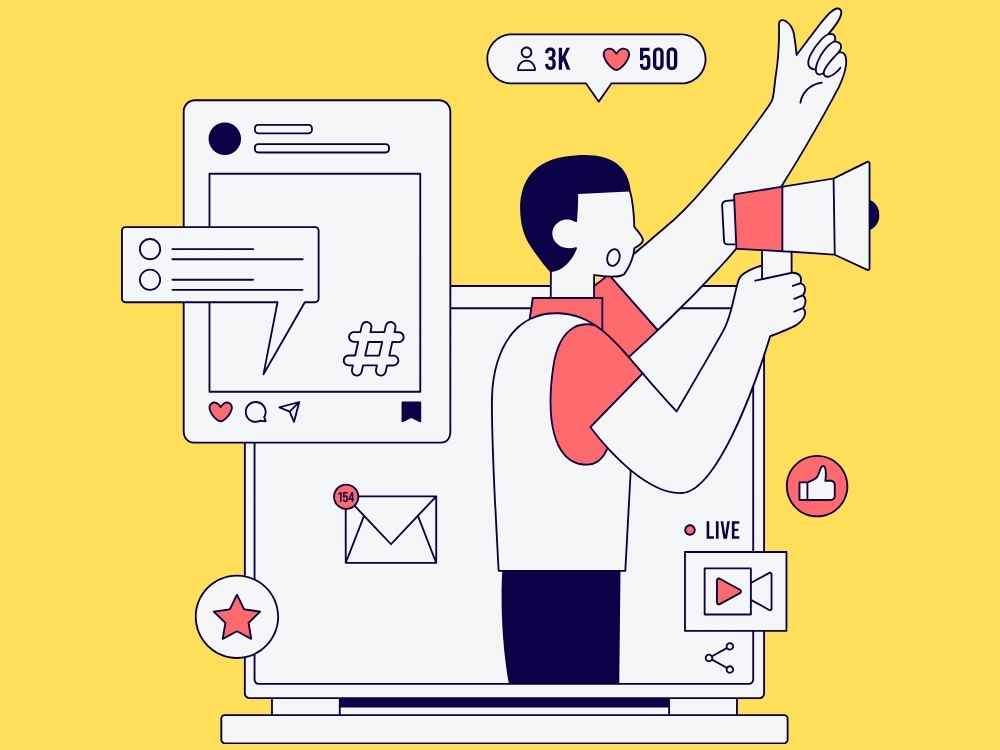In the digital age, simply creating content isn’t enough. You need content that grabs attention, resonates with readers, and drives engagement through shares, likes, and comments. But how do you ensure that your content cuts through the noise? Understanding the science behind high-engagement content is the key to boosting your online presence and creating content that people love to share.
In this article, we’ll break down the proven techniques, tools, and actionable strategies you can use to craft highly engaging content that your audience can’t help but interact with.
1. Start with Emotion: Create Content That Resonates
One of the fundamental principles of high-engagement content is that emotions drive sharing. People don’t just share content because they find it informative; they share it because it evokes an emotional reaction. According to a study by The New York Times, some of the top reasons people share content are to entertain, inspire, or connect with others over shared interests.
Key Emotions to Tap Into:
- Happiness and Joy: Feel-good content gets shared because it uplifts people’s moods. Think about heartwarming stories, positive news, or inspirational quotes.
- Surprise or Awe: Content that shocks or surprises users, like an unbelievable fact or a groundbreaking innovation, tends to go viral.
- Fear and Anxiety: Content that taps into fears—like missing out on important trends or harmful mistakes—can drive action.
- Anger or Outrage: Content that sparks debate or challenges conventional thinking often fuels comments, discussions, and shares (just be mindful of going overboard).
Example: Think about viral videos that evoke laughter or awe. A well-known example is the “Ice Bucket Challenge” campaign, which tapped into surprise, fun, and a sense of purpose—and it spread like wildfire.
Pro Tip: Before creating content, ask yourself: What emotion do I want my readers to feel, and how can I trigger that emotion through my words, visuals, or message?
2. Tell a Compelling Story: Turn Data into Narrative
Humans are wired to respond to stories. Data and facts are important, but wrapping them in a compelling narrative makes them more engaging and easier to remember. High-engagement content often blends information with storytelling to create a connection with readers.
How to Create Story-Driven Content:
- Introduce a Problem: Start with a relatable challenge or pain point your audience faces.
- Present a Solution: Show how your product, service, or idea solves that problem.
- Add Real-World Examples: Use case studies, customer stories, or personal anecdotes to bring your points to life.
- End with a Call-to-Action: Encourage readers to take the next step, whether that’s sharing the content, signing up for a newsletter, or commenting their thoughts.
Example: Consider TOMS Shoes’ “One for One” campaign, where every purchase helps someone in need. The brand turned their business model into a story of compassion, resonating deeply with their audience and driving massive shares.
Pro Tip: Use storytelling frameworks like the Hero’s Journey to structure your content. Introduce the “hero” (your customer or product), present the challenges, and highlight the transformation.
3. Leverage Visual Content: Infographics, Videos, and Images
Visual content is processed 60,000 times faster than text, which is why it’s one of the most effective ways to boost engagement. Posts with visuals receive 94% more total views than those without. Incorporating the right visuals into your content will not only increase its appeal but also make it more shareable.
Types of Visual Content to Use:
- Infographics: These are perfect for breaking down complex data into easily digestible visuals. Use tools like Canva or Piktochart to create shareable infographics.
- Short Videos: With platforms like TikTok, Instagram Reels, and YouTube Shorts, short-form videos are in high demand. Create videos that summarize your blog post, explain a concept, or share a behind-the-scenes look at your brand.
- Memes and GIFs: Light-hearted, humorous content often sees high engagement, especially on social media platforms like Twitter and Facebook.
- High-Quality Images: Use engaging, high-quality images to break up text and draw attention. Stock photo sites like Unsplash or Pexels offer free high-res images.
Example: BuzzFeed is famous for combining light-hearted quizzes with memes and GIFs, making their content highly shareable across social media.
Pro Tip: Use tools like BuzzSumo to analyze which types of visuals are trending in your niche. This will help you create content that’s more likely to be shared.
4. Optimize for Social Sharing: Make It Easy to Share
Even the best content needs a push to go viral. By optimizing your blog or website for social sharing, you make it easier for your audience to spread the word.
Actionable Tips for Optimizing Content for Sharing:
- Add Social Share Buttons: Place share buttons at the beginning and end of your articles so readers can easily share your content on Facebook, Twitter, LinkedIn, etc. Tools like AddThis or ShareThis can help you do this.
- Write Shareable Headlines: Headlines are the first thing people see. Make them catchy, intriguing, and concise. Use tools like CoSchedule’s Headline Analyzer to gauge the effectiveness of your headlines.
- Include Click-to-Tweet Quotes: Create tweetable snippets of your content by using the Click-to-Tweet tool. This encourages readers to share valuable insights without having to compose their own posts.
Example: Websites like Buffer and HubSpot implement share buttons, tweetable quotes, and optimized headlines to encourage more shares on social platforms.
Pro Tip: Use UTM tracking links on social share buttons to track which content is getting shared the most, and from which platforms.
5. Post at the Right Time: When Timing Matters
The timing of your content release can significantly affect engagement. By understanding when your audience is most active, you can maximize your post’s reach and increase the chances of getting likes and shares.
Best Practices for Timing Content:
- Use Analytics: Tools like Google Analytics or social media platform insights (like Facebook Insights) will tell you when your audience is most active.
- Post on Weekdays for B2B: For business-to-business (B2B) content, weekdays between 9 AM and 5 PM typically see higher engagement, as professionals are most active during these hours.
- Post on Weekends for B2C: For business-to-consumer (B2C) content, weekends and evenings are often the best times to post, as users tend to browse social media during their free time.
- Schedule Posts: Use scheduling tools like Hootsuite, Buffer, or Later to ensure your posts go live when your audience is most likely to engage.
Example: BuzzSumo found that content shared on Tuesdays and Thursdays tends to perform better on social media, with high traffic around mid-morning.
Pro Tip: Experiment with different posting times and track performance to find the optimal timing for your specific audience.
6. Engage with Your Audience: Encourage Two-Way Conversations
Creating engaging content is not just about the content itself, but also about interacting with your audience. Replying to comments, encouraging discussion, and asking questions all help to create a sense of community around your brand.
Ways to Encourage Engagement:
- Ask Questions: End your articles with open-ended questions to invite feedback. For example, “What are your thoughts on this topic?” or “Have you tried any of these strategies? Let us know in the comments.”
- Reply to Comments: Show your readers you value their input by responding to their comments. This encourages more engagement from others who may see the active discussion.
- Run Contests or Giveaways: Encourage users to share your content in exchange for a chance to win a prize.
Example: Neil Patel often engages directly with his readers in the comments section of his blog, fostering more discussion and loyalty among his followers.
Pro Tip: Use live streaming on platforms like Instagram or Facebook to directly interact with your audience in real-time, answering questions and encouraging participation.
7. Keep It Fresh: Stay on Top of Trends
Lastly, high-engagement content often taps into trending topics. By staying relevant and aligning your content with what’s currently hot, you increase the chances of your content being shared.
How to Stay on Top of Trends:
- Use Tools Like Google Trends: Google Trends helps you see what topics are currently trending in your industry.
- Monitor Social Media: Follow industry influencers, hashtags, and communities on Twitter, LinkedIn, and Reddit to identify popular topics.
- Create Content Around Popular Events: For example, if you’re in the tech industry, writing about the latest gadget releases or software updates will likely garner more attention.
Example: During the rise of TikTok, many brands jumped on the platform’s trending challenges to create viral content that resonated with younger audiences.
Pro Tip: Combine trending topics with evergreen content to maintain





[…] […]
[…] Also Read “The Science Behind High-Engagement Content: Proven Tips to Increase Shares and Likes.” […]
[…] If you wrote a detailed answer on “How to create high Engagement Content,” promote it to drive traffic to your landing page optimization […]